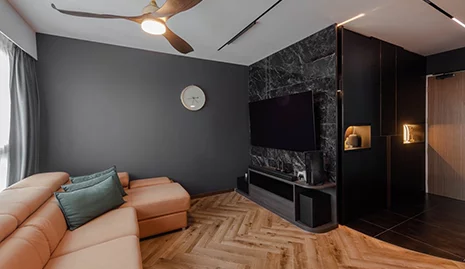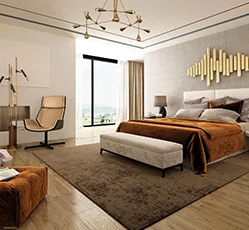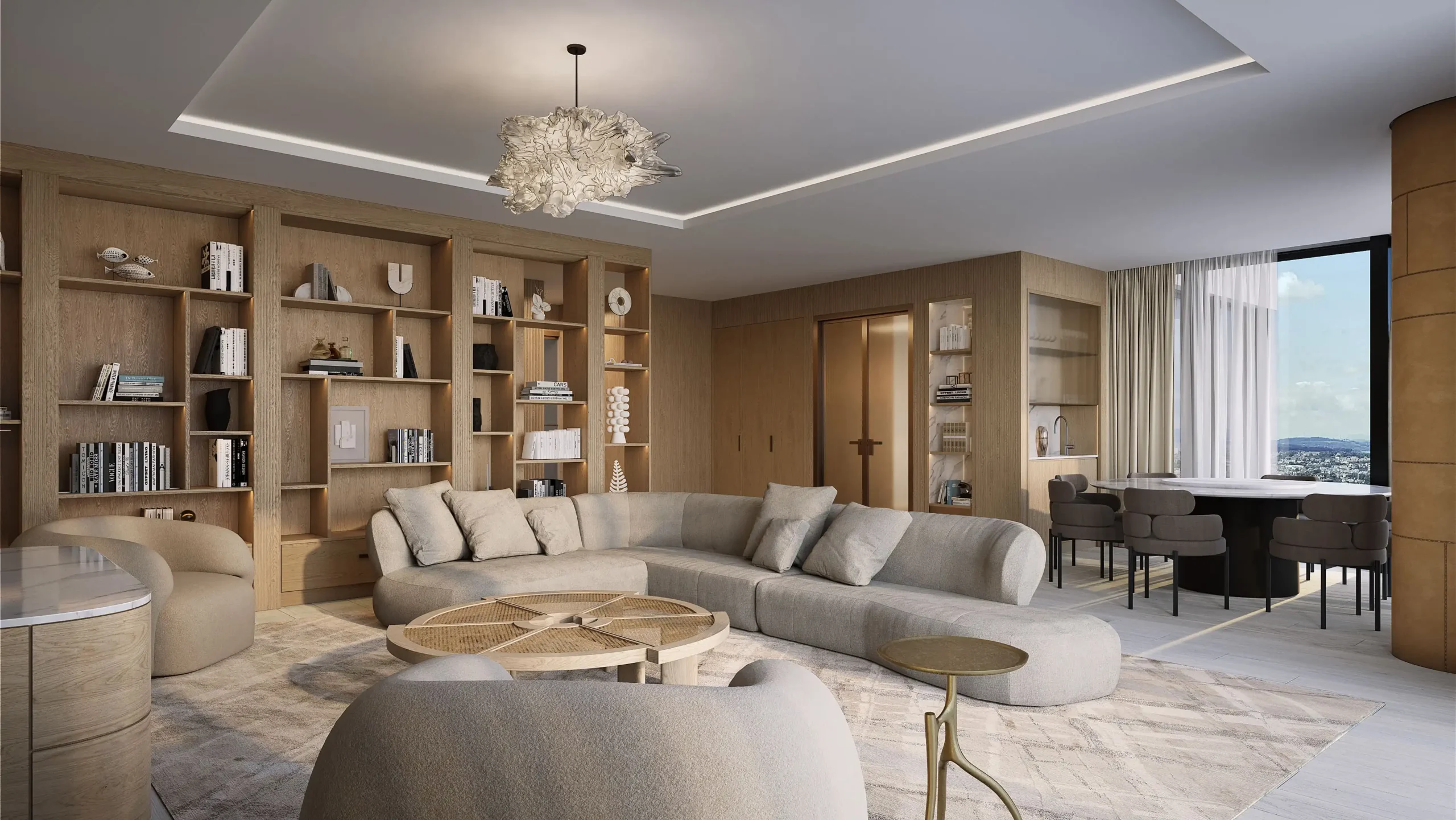Introduction
Dark interior doors are making a powerful statement in modern home design, serving as sophisticated focal points that redefine spaces with depth and character. More than just functional elements, these darker hues create striking visual anchors that can completely transform the atmosphere of your home. Let’s explore why dark doors are dominating design conversations and discover inspiring ways to incorporate them into your space.
Articles connexes :
Stunning Interior French Doors
The Compelling Case for Dark Interior Doors
Dark interior doors act as punctuation marks in your home’s visual language. They create intentional pauses that guide the eye and establish rhythm throughout your space. When strategically placed, they can:
– Define zones in open-concept layouts without sacrificing flow
– Create stunning contrast against light-colored walls and flooring
– Add sophisticated weight to otherwise airy spaces
– Conceal high-traffic areas while maintaining elegance
Beyond aesthetics, dark hues like charcoal, espresso, and deep navy create psychological comfort – they feel grounded, secure, and intentionally curated. The common concern about dark doors making spaces feel smaller is easily addressed through strategic lighting and balanced color distribution throughout the room.
12 Transformative Dark Interior Doors Concepts
Matte Black with Metallic Accents
The combination of matte black doors with brass or gold hardware creates instant luxury. This pairing works exceptionally well in transitional spaces like entryways and hallways. The warm metallic tones soften the starkness of black while adding reflective surfaces that play with light.

Rich Walnut for Organic Warmth
Dark walnut doors bring nature’s warmth indoors with their deep, grain-rich surfaces. They create cozy sophistication in bedrooms and studies, pairing beautifully with natural textiles and earth-toned color palettes. The organic variations in the wood ensure each door tells its own unique story.
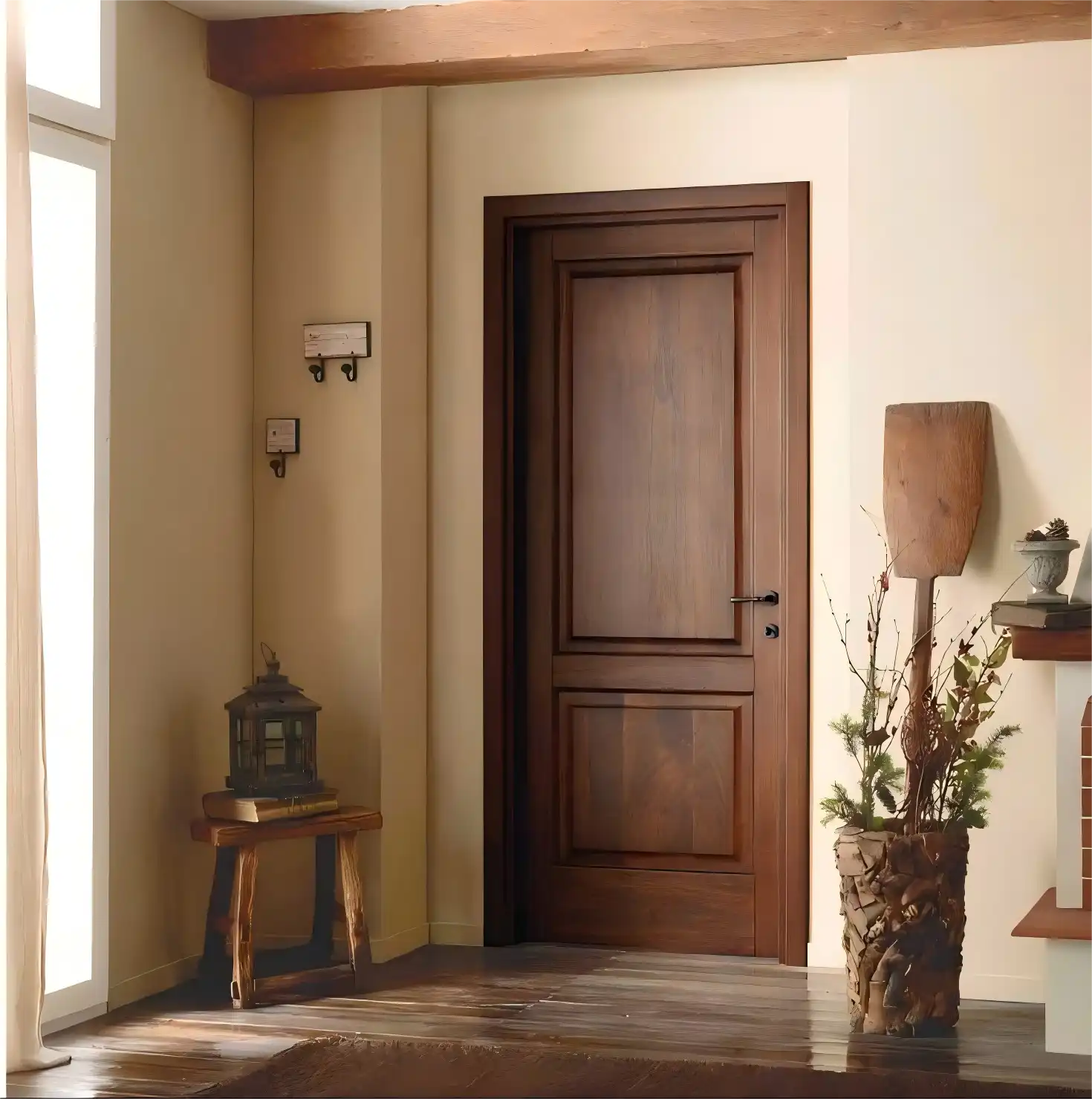
Charcoal Sliding Systems
Space-saving charcoal sliding doors offer both functionality and industrial chic. Their muted tone provides softer contrast than pure black, making them versatile companions for various color schemes. Consider pairing with 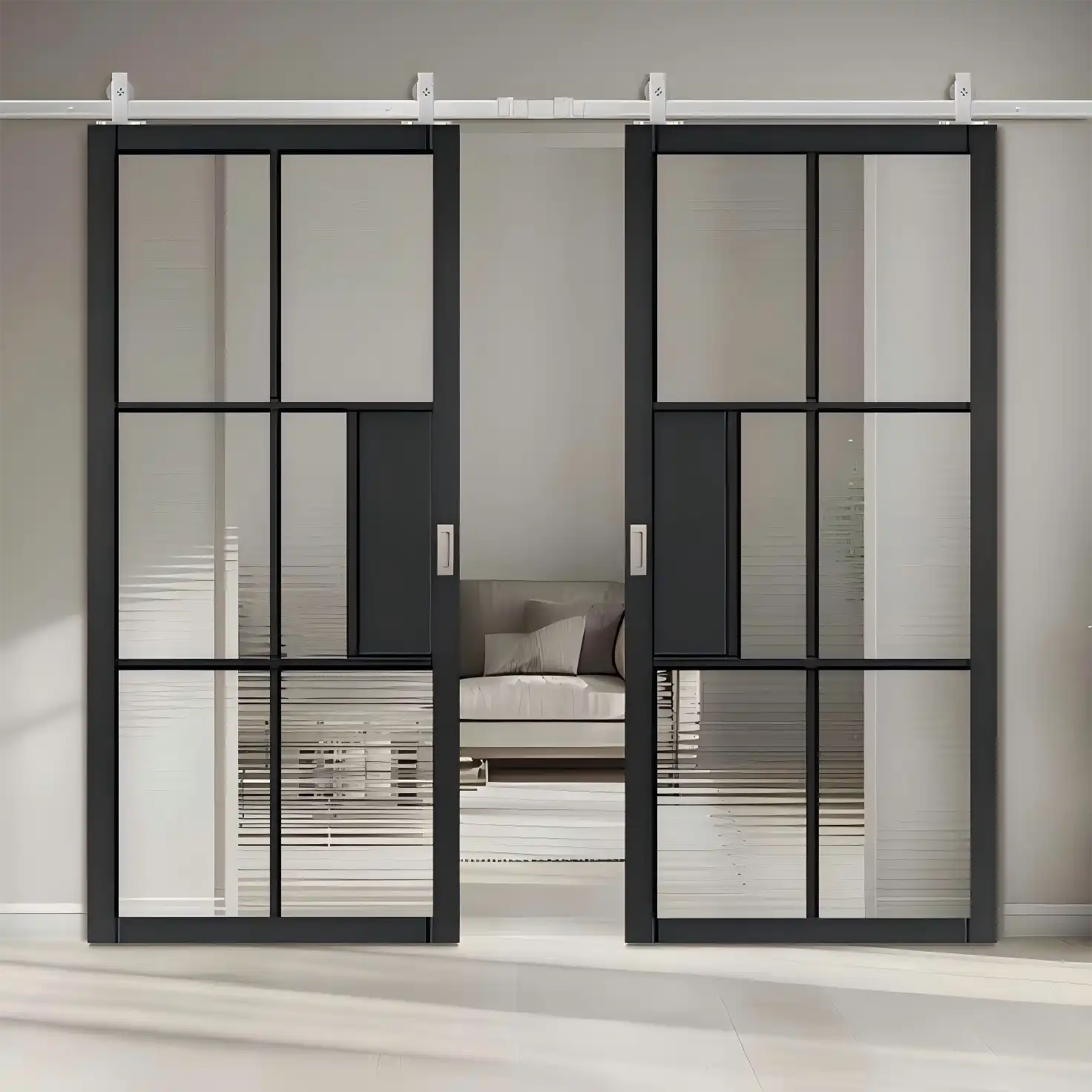 frosted glass panels to maintain light flow while creating privacy.
frosted glass panels to maintain light flow while creating privacy.
Navy Blue Statement Doors
Deep navy doors deliver personality without overwhelming a space. This rich hue feels both traditional and contemporary, working particularly well in studies and dining rooms. For 2026, consider navy tones with subtle green or plum undertones for a more nuanced look.
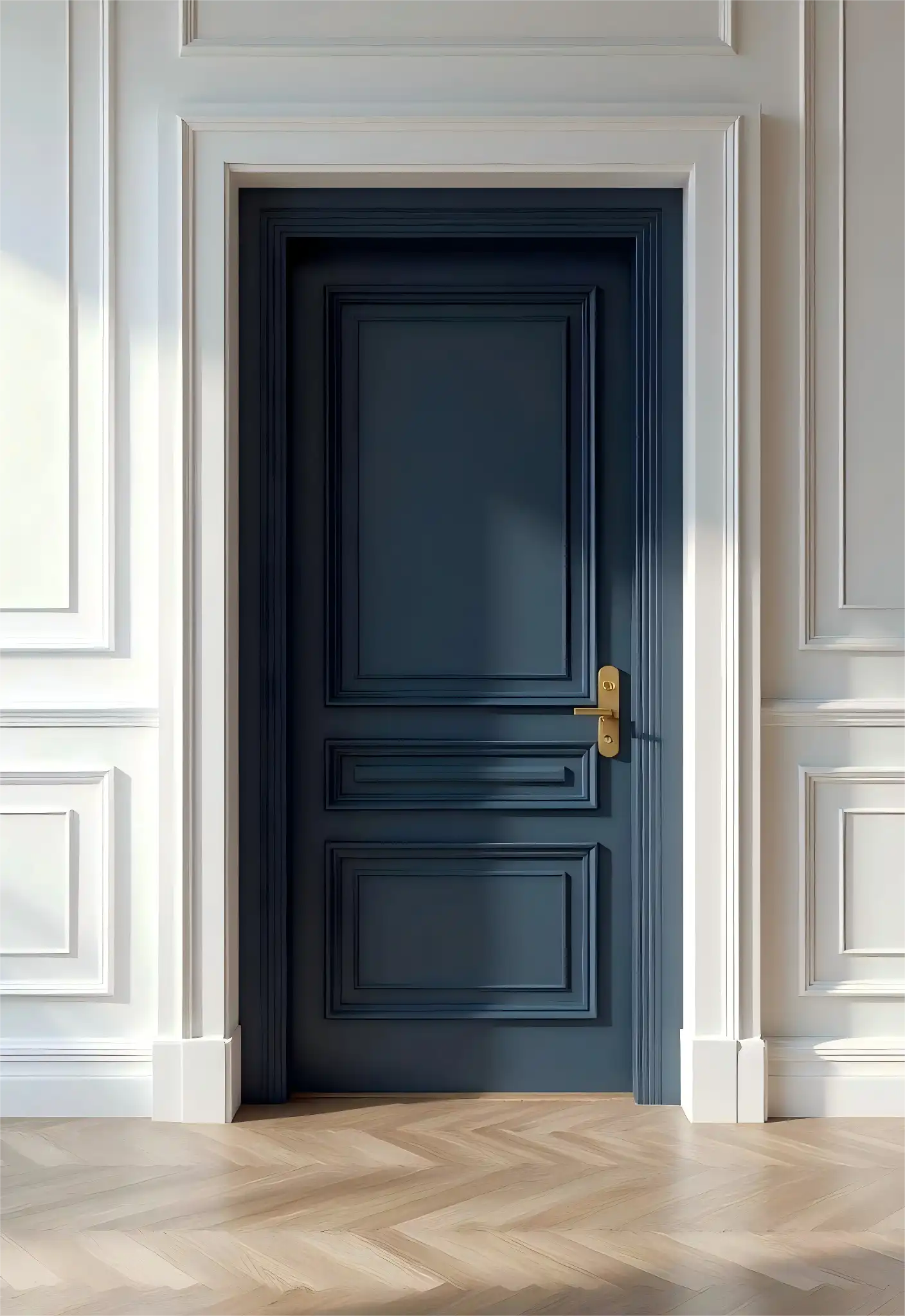
Textured Wood Panels
Dark wood panel doors add dimensional interest through their tactile surfaces. The play of light across raised panels creates dynamic shadows throughout the day. These doors bring traditional craftsmanship to modern interiors, perfect for creating focal points in minimalist spaces.
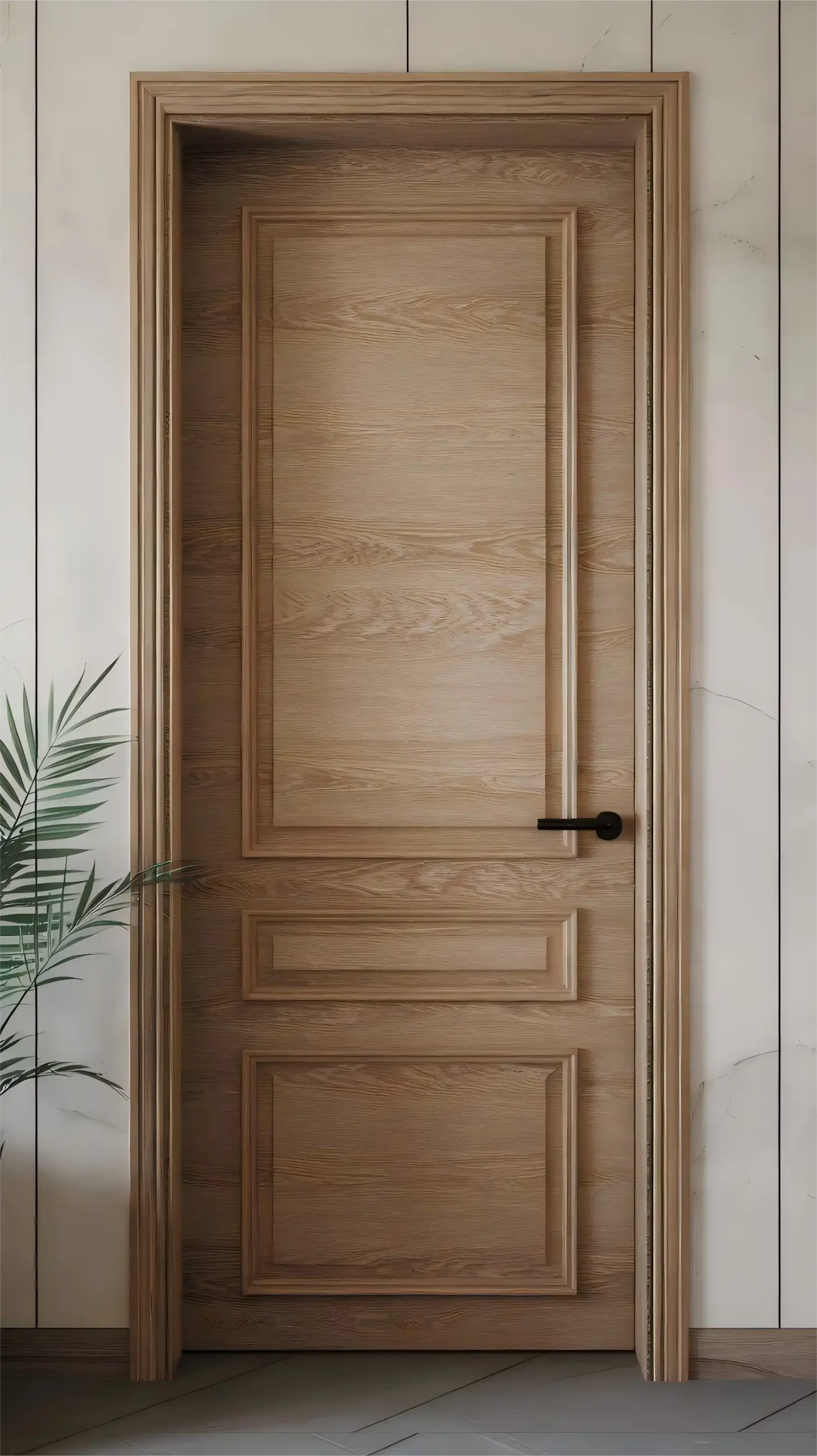
Frosted Glass with Dark Frames
The combination of frosted glass and dark framing balances privacy with light transmission. This solution works beautifully for home offices and bathrooms where both separation and connectivity are desired. The contrast between opaque frames and translucent panels creates visual intrigue.
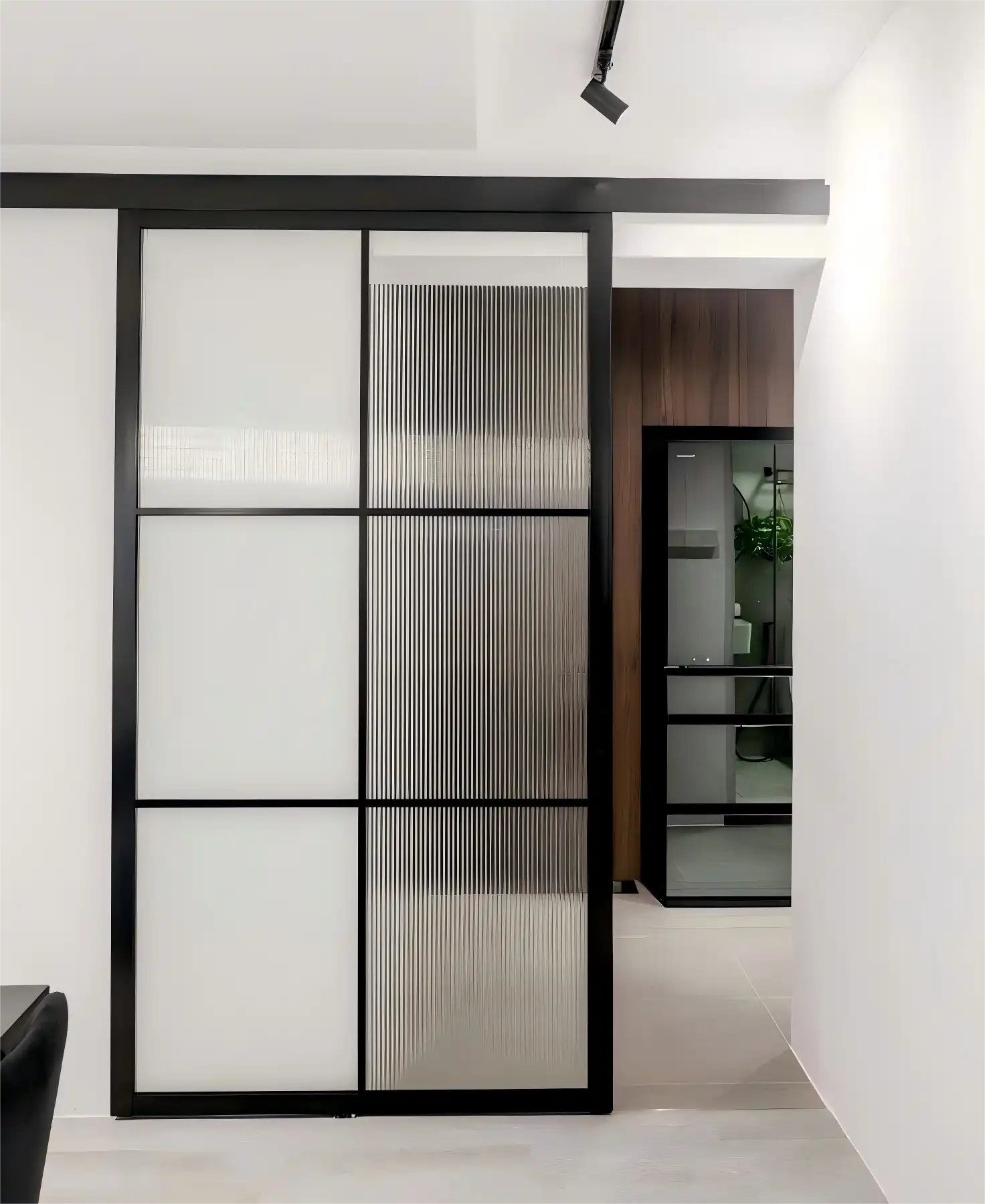
Systèmes de portes françaises noires
Modern black French doors redefine spatial relationships while maintaining visual connectivity. Their grid patterns create geometric interest that changes throughout the day as light shifts. Use them to separate living and dining areas while preserving an open, airy atmosphere.
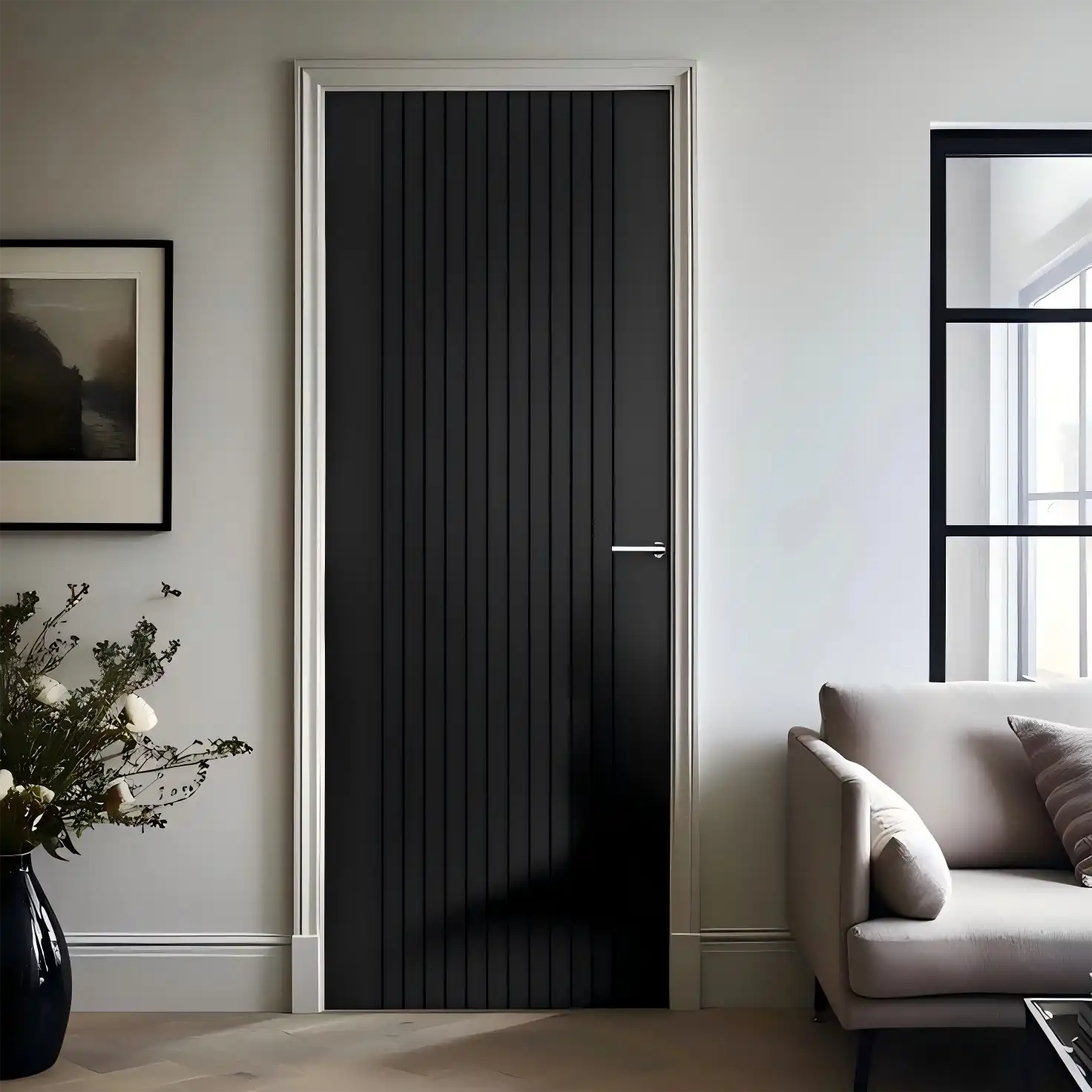
Textured Veneer Finishes
Doors with linear or wavy textured veneers in dark finishes add artistic depth to your interiors. These surfaces interact wonderfully with directional lighting, creating ever-changing patterns throughout the day. They’re perfect for adding interest to otherwise neutral spaces.

Frameless Dark Portals
For ultimate minimalism, frameless dark doors create seamless transitions between spaces. These architectural elements appear as intentional openings in walls rather than traditional doors. They work particularly well in gallery-like spaces where clean lines dominate.
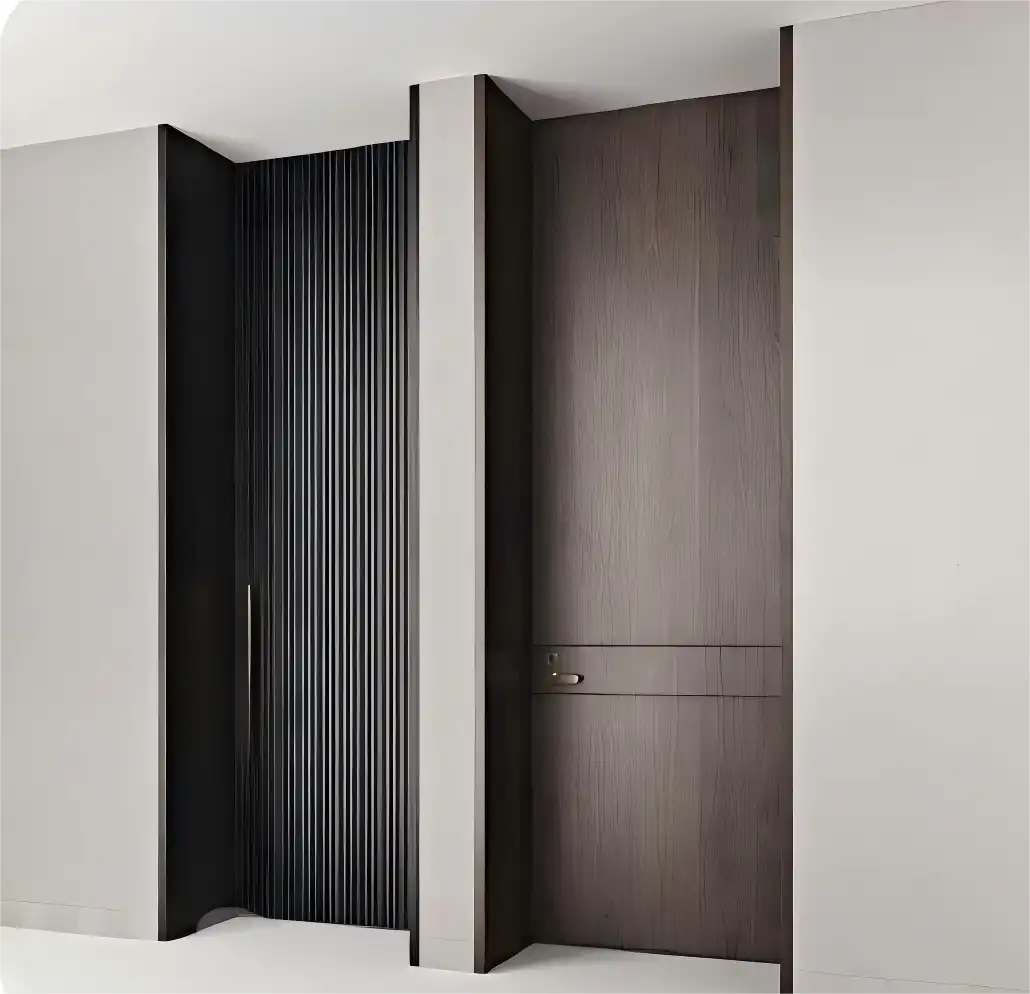
Two-Tone Creative Expressions
Experimental two-tone doors offer unlimited creative possibilities. Consider horizontal splits, vertical divisions, or even geometric patterns combining different dark hues. These custom solutions work wonderfully in creative spaces and modern lofts.
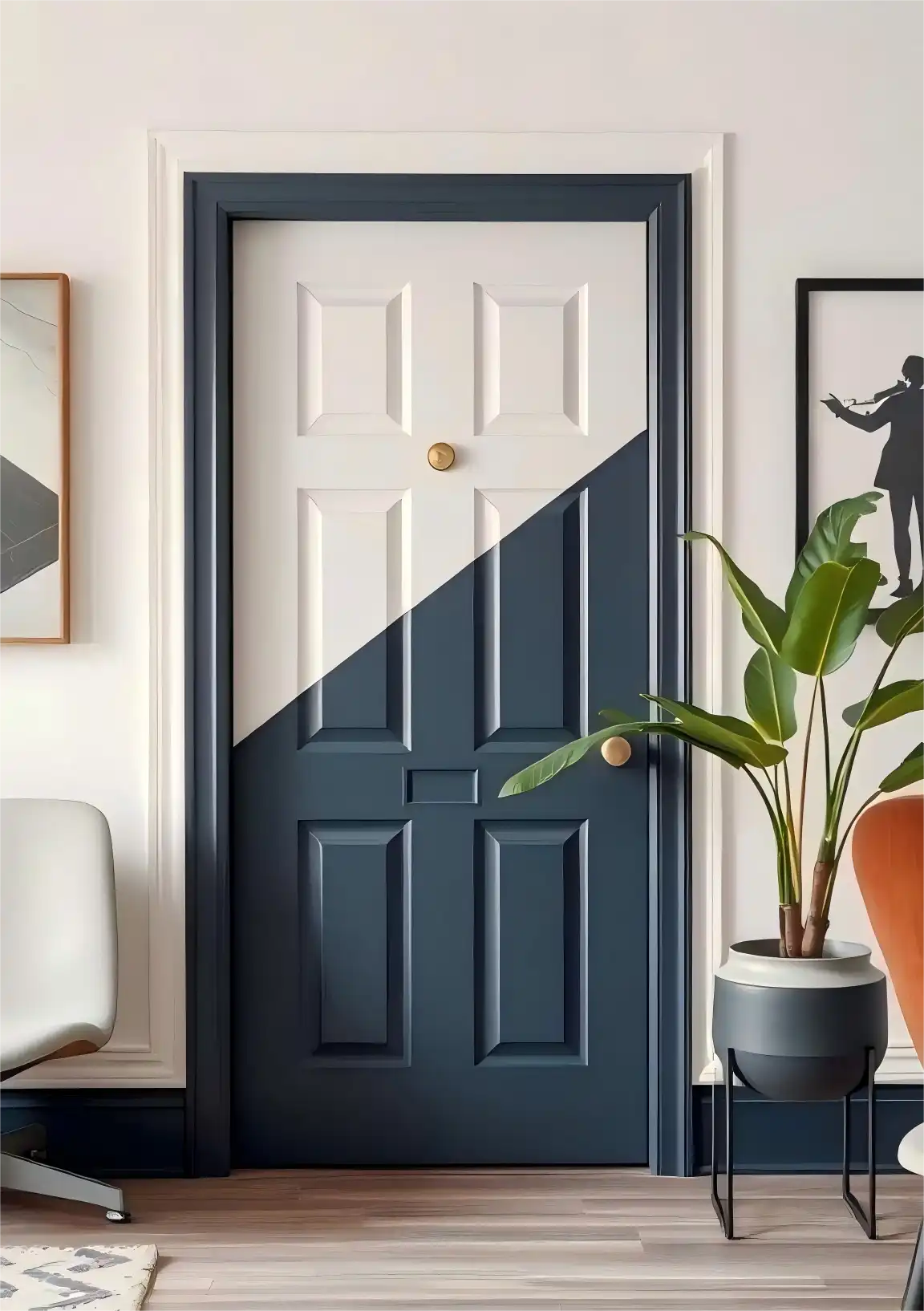
Deep Green Botanical Hues
Forest green and hunter green doors bring rich, organic depth to interiors. These nature-inspired tones create calming, grounded atmospheres perfect for bedrooms and reading nooks. Pair with natural wood elements and botanical prints for a cohesive look.

Dark Lacquered Finishes
High-gloss lacquered doors in deep hues create dramatic reflections and depth. While requiring more maintenance, these finishes add unparalleled sophistication to formal spaces. The reflective surfaces help bounce light around rooms, counterintuitively making spaces feel brighter.
Practical Considerations for Dark Interior Doors
Maintenance and Care
– Matte and satin finishes better conceal fingerprints and smudges
– Regular dusting with microfiber cloths maintains the finish integrity
– Use gentle, non-abrasive cleaners to preserve the surface
– Consider UV-protective coatings for doors in sun-exposed areas
Lighting Strategies
– Position directional lighting to highlight door textures and colors
– Use contrasting light colors on adjacent walls to make doors stand out
– Incorporate mirrors to reflect light and enhance the sense of space
– Consider LED strip lighting along door frames for dramatic effects
Design Integration
– Repeat dark tones elsewhere in the room for color balance
– Use consistent hardware finishes throughout for cohesive look
– Consider door color in relation to flooring and ceiling tones
– Ensure adequate contrast with wall colors for maximum impact
Selecting Your Perfect Dark Interior Doors
Choosing the right dark interior doors involves considering several factors:
Assess Your Space
– Measure natural light availability throughout the day
– Consider existing wall colors and flooring materials
– Evaluate the door’s visibility from key vantage points
– Determine whether you want the door to blend or stand out
Style Alignment
– Match door style to your overall design aesthetic
– Consider historical accuracy for period homes
– Evaluate proportion and scale relative to room size
– Ensure architectural consistency
Material Selection
– Solid wood offers warmth and character
– Engineered wood provides stability and affordability
– Metal frames suit industrial and modern aesthetics
– Consider durability requirements based on room usage
Conclusion
Dark interior doors represent more than a passing trend – they’re a design choice that adds depth, character, and intentionality to your living spaces. By carefully considering style, placement, and maintenance, you can transform ordinary doorways into extraordinary design statements that elevate your entire home.
The journey toward a more sophisticated interior begins with embracing the power of dark tones. Whether you choose one statement door or transform multiple entryways, these elegant portals will redefine how you experience and move through your home, creating memorable moments at every turn.
Ready to explore how dark interior doors can transform your space? Our design team specializes in helping homeowners find the perfect balance between bold statements and timeless elegance.



